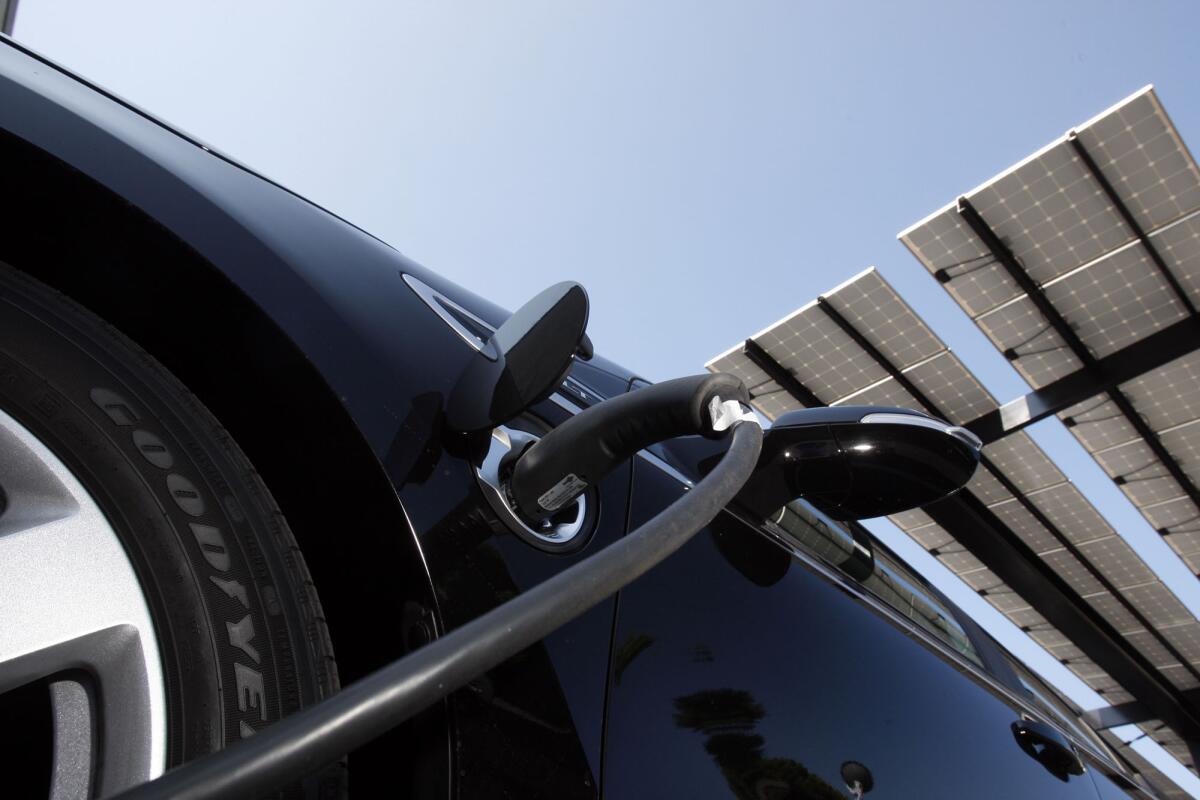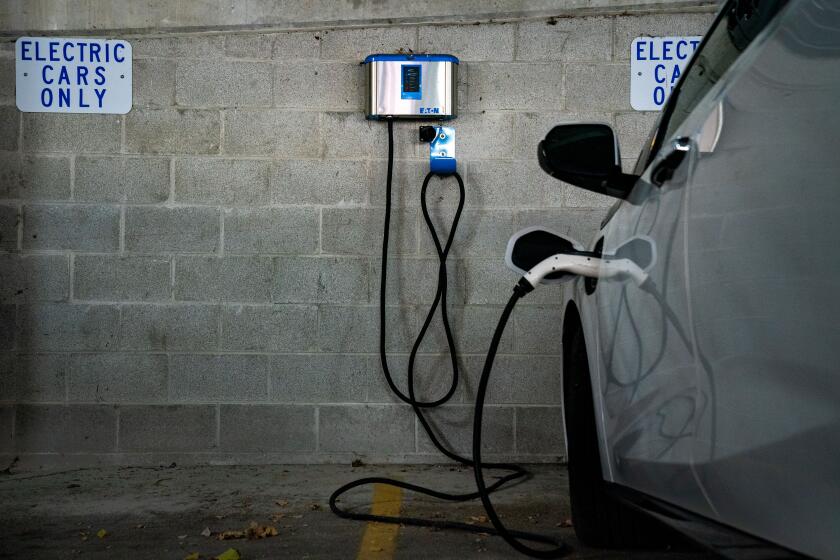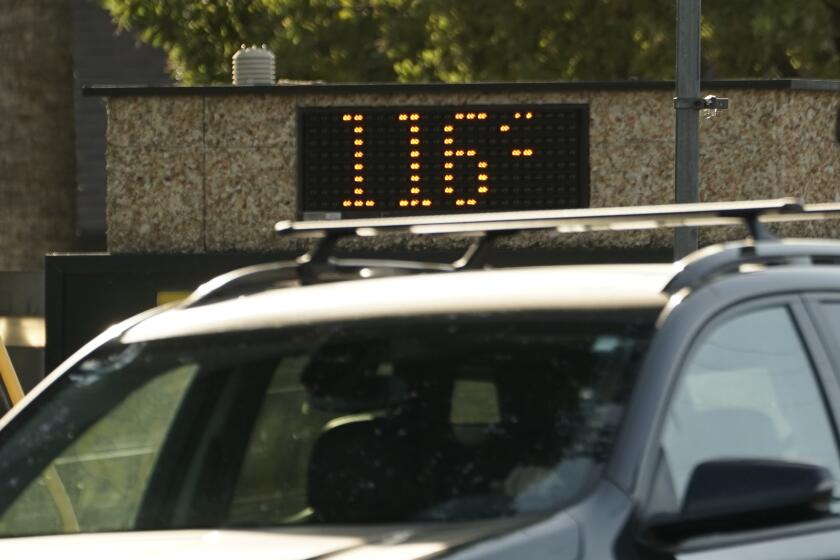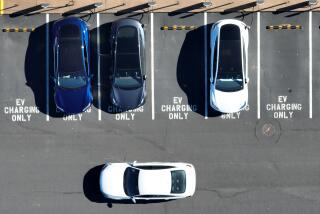Editorial: EVs have big batteries. They should come equipped to power homes and the grid in emergencies

Efforts to give the nation’s growing fleet of electric vehicles a second job as backup power sources got a significant boost last week.
General Motors announced Tuesday that all of its electric vehicles will have two-way charging capability by model year 2026, with some available by 2024. The feature, known as vehicle-to-home, enables their massive batteries to power homes during blackouts, heat waves and other periods of high energy demand.
As it is now, electric cars remain a huge and largely untapped source of power for homes and buildings because only a handful of models are equipped with this technology.
GM’s announcement is good news, and a promising indication of where the auto market is headed. At a time when worsening heat waves and wildfires from climate change are raising the risk of outages and home and vehicle electrification puts more strain on the power grid, we need all the battery storage we can get.
This is another welcome development after GM’s change of heart with the Chevrolet Bolt, the affordable, compact electric car the company planned to discontinue, only to announce last month that it would bring it back. The Bolt is one of the few EVs currently eligible for the full federal $7,500 tax credit, and its new version will come equipped with two-way charging.
There is a small but growing number of electric vehicle models that offer the ability to send electricity in both directions. Tesla, whose electric Model Y is California’s best-selling passenger vehicle, also plans for its lineup to be outfitted with two-way charging capabilities by 2025.
If the batteries of even a fraction of the electric cars on the roads by 2030 are hooked into the state’s power grid, they could help keep the lights on.
But consumers shouldn’t be dependent on the sometimes fickle pledges of carmakers. That’s why California lawmakers should support legislation to require backup power capability as a standard feature. Senate Bill 233, by state Sen. Nancy Skinner (D-Berkeley), would require that all new electric vehicles sold in California have two-way charging capability starting in model year 2030.
It’s a no-brainer. And if anything, 2030 isn’t soon enough.
California has moved too slowly to enact policies to tap vehicle batteries to keep the lights on, because in an ideal world two-way charging requirements would have been in place well in advance of the auto market’s accelerating shift to electric. Electric, plug-in hybrid and fuel cell models now account for 1 in 4 of new car sales in California, and it would be a wasted opportunity if people are unable to use them as backup power sources or to feed into the electrical grid when demand is high.
All Californians should be able to live in an efficient and non-polluting home even if it wasn’t built for an all-electric world like the new houses in Menifee.
It’s perplexing, though not entirely surprising, that automakers have opposed this legislation, calling a two-way charging requirement “premature” even as companies such as Hyundai, Kia, Nissan and Ford promote it as a desirable feature in some of their own vehicles.
The industry lobbying group, the Alliance for Automotive Innovation, wrote in a letter to lawmakers last month that customers should not be forced to pay for a feature they may not use, and “this technology is a competitive matter between vehicle manufacturers and should remain that way.”
It sounds like they just don’t like being told what to do.
But there is value in ensuring that all car buyers are able to benefit from this technology, not just those who can afford high-end models, such as the Ford F-150 Lightning, which boasts the ability to power a home for three days.
An Arizona congressman has proposed fixing that. It makes sense considering how destructive, and increasingly common, high temperatures have become.
It also doesn’t make sense to spend upwards of $10,000 on a home battery storage system, like a Tesla Powerwall, in addition to an electric car with a battery that could offer those same benefits.
Making two-way charging technology standard could help with EV adoption and raise the value proposition of going electric by making it clear that consumers will not only save on fuel and maintenance costs, but also gain attractive and practical new features.
Vehicles are not the only technological or financial obstacle that needs to be addressed. Charging stations should also be upgraded with the ability to send electricity in both directions, and it currently costs thousands of dollars to outfit a home with the equipment needed to feed electricity from a plugged-in vehicle to the grid.
It’s clear that state and federal officials and the auto industry need to do a lot more before we see the widespread use of electric vehicles to power homes or the electrical grid, but requiring this capability in new vehicles is a sensible first step. It is not just a nice-to-have amenity, like heated seats and a moon roof, but an essential feature for consumers and the power grid.
More to Read
A cure for the common opinion
Get thought-provoking perspectives with our weekly newsletter.
You may occasionally receive promotional content from the Los Angeles Times.













